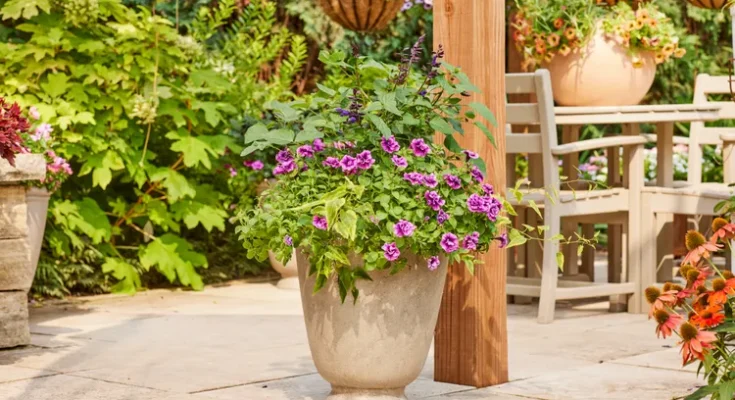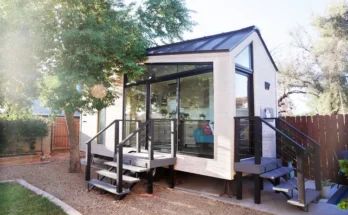Focus your attention on these types of plants during a heat wave so they stay in top shape.\
Outdoor plants can’t escape a heat wave by ducking into the AC like humans do, but there are ways to help them through extremely hot weather so they emerge on the other side ready to grow, flower, and fruit well.
How well plants are equipped to manage heat depends not only on the type of plant (cool-season vs. heat-loving plants) but also on their growth stage (newly planted vs. established and mature). Also, the modified environments in which we are growing plants, such as a small container on a sunny patio or less-than-ideal soil that gets baked in full sun, create a significant challenge. Wilting stems and foliage and brown leaf edges are common signs that a plant is battling the heat.
1. New Trees, Shrubs, and Perennials
Recently planted trees, shrubs, and perennials don’t have a far-reaching root system that can mine for water during a heat wave. Relying on their meager root system, while mediating the stressors of growing in a new place, makes a heat wave especially tough for new plants.
Woody plants need at least six months to establish a strong root system. Perennials require about three months. Extra care is essential during that period.
Aid new landscape plants through a heat wave with vigilant, deep watering. Check the soil moisture every other day. If the soil is cool and moist 2 inches below the surface, there is no need to water. If it is dry, water deeply to soak the soil about 8 inches deep and several inches beyond the root zone.
Spread a 2-inch-thick layer of mulch over the root zone to prevent soil moisture evaporation. Shredded bark, cocoa hulls, pine straw, and leaf mold all hold water in the soil.
2. Container Plants
It’s no secret that container plants dry out quicker than plants in garden soil due to the limited soil volume in pots and lack of insulation. The moisture loss is even more dramatic in a heat wave. Water pots every morning and check the soil moisture level again in early evening. The goal is to water deeply. If the soil is dry to the touch, water the pot until water drains freely from the drainage holes.
To reduce sun exposure, move mobile containers to a shaded location during a heat wave. For easy watering, choose a spot that is close to a water source. If the containers are too large to be moved, use patio umbrellas to provide shade.
3. Hanging Baskets
Plants in hanging baskets are even more prone to drying out than container plants, as they are exposed to drying wind more than plants at ground level. Limit wind and sun exposure by moving hanging baskets to a protected location during a heat wave. The best location has easy access to water, is shaded, and shielded from wind.
Even with these adjustments, a hanging basket will likely need to be watered daily. Check the soil surface. If it is dry to the touch, water until it drains freely from the hanging basket.
4. Flowering Plants
Deadhead cutting flowers, as well as any flowering annuals and perennials, during a heat wave. This prevents the plants from spending valuable water resources on seed development and enables them to start blooming again when the heat wave is over. Snip off any spent flowers as soon as you notice them. Also, pull any weeds that compete with flowering plants for water.
5. Vegetable Gardens
In temperatures above 90°F, peppers, squash, tomatoes, and cucumbers drop off their flowers and even undeveloped fruit. Beans shed their flowers in temperatures above 85°F. The plants do this to conserve energy. There is nothing you can do to prevent it; simply wait until the heat wave passes.
In a heat wave, water your vegetable garden diligently. Soak the soil around the plants to a depth of 6 inches whenever the soil is dry to the touch. Veggies will return to their normal production after the temperatures drop to normal seasonal levels.
6. Cool Season Turf
Cool-season types of grass such as Kentucky bluegrass, fine fescue, and perennial ryegrass grow best between 65 and 80°F. A sustained heat wave causes these cool-weather-loving grasses to decline. Dull color and limited growth are both signs of heat stress.
If you are watering your lawn, continue delivering water at the rate of about 1 inch per week. Water deeply and infrequently. Water will help the turf battle the heat. When temperatures return to moderate levels, the grass will grow with gusto again.



